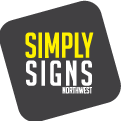Signage plays a crucial role in business, serving as a powerful tool for communication and branding. Effective signage can have a significant impact on customer experience, helping to attract attention, convey important information, and create a positive impression of a business. Visual communication through signage is essential for businesses of all sizes and industries.
One of the key reasons why signage is important in business is its ability to attract attention. Well-designed and strategically placed signage can catch the eye of potential customers, drawing them into a store or business. In fact, studies have shown that effective signage can increase foot traffic and sales. Signage acts as a silent salesperson, promoting products or services and enticing customers to make a purchase.
In addition to attracting attention, effective signage also plays a crucial role in conveying important information to customers. Signage can provide directions, display prices, promote special offers, or communicate important safety information. Clear and concise signage helps customers navigate a space and find what they are looking for, enhancing their overall experience.
Furthermore, visual communication through signage is an essential component of branding. Signage is often the first point of contact between a business and its customers, and it serves as a representation of the brand’s identity. A well-designed sign that reflects the brand’s values and personality can create a positive impression and help build brand recognition and loyalty.
Understanding the Psychology of Colour in Signage Design
Colour plays a significant role in the psychology of human emotions and can have a powerful impact on how people perceive and interact with signage. Different colours evoke different emotions and can influence customer behaviour.
For example, warm colours such as red, orange, and yellow are often associated with energy, excitement, and urgency. These colours can be effective in attracting attention and creating a sense of urgency or excitement around a product or promotion. On the other hand, cool colours such as blue and green are often associated with calmness, trust, and reliability. These colours can be used to create a sense of trust and reliability in a brand.
When choosing colours for signage, it is important to consider the target audience and the desired emotional response. For example, a children’s toy store may use bright and vibrant colours to create a sense of fun and excitement, while a luxury brand may use more muted and sophisticated colours to convey elegance and exclusivity.
Contrast is another important aspect of effective signage design. Contrast refers to the difference in brightness or colour between different elements in a design. High contrast can help make signage more legible and easier to read from a distance. For example, using dark text on a light background or vice versa can create a strong contrast that enhances readability.
Typography 101: Choosing the Right Fonts for Your Business Sign
Typography plays a crucial role in signage design, as it directly impacts legibility and readability. Choosing the right font for your business sign is essential to ensure that your message is effectively communicated to your target audience.
Legibility refers to how easily letters can be distinguished from one another, while readability refers to how easily words and sentences can be read and understood. When it comes to signage, legibility is of utmost importance, as signs are often viewed from a distance or while in motion.
When choosing a font for your business sign, it is important to consider factors such as letter spacing, stroke width, and letter height. Fonts with clear and distinct letterforms are generally more legible than fonts with intricate or decorative details. Sans-serif fonts, such as Arial or Helvetica, are often recommended for signage due to their simplicity and clarity.
In addition to legibility, font style also plays a role in brand identity. Different fonts convey different personalities and can help reinforce the overall brand image. For example, a modern and sleek font may be more suitable for a technology company, while a traditional and elegant font may be more appropriate for a high-end restaurant.
Choosing the Right Signage Material: A Guide for Business Owners
Choosing the right signage material is essential to ensure that your signs are durable, cost-effective, and visually appealing. There are several different types of signage materials available, each with its own advantages and disadvantages.
One of the most common signage materials is vinyl, which is versatile, durable, and cost-effective. Vinyl signs can be used both indoors and outdoors and can be easily customized with graphics and text. Another popular material is acrylic, which is lightweight, weather-resistant, and has a high-quality appearance. Acrylic signs are often used for high-end retail stores or corporate offices.
Metal signs, such as aluminium or stainless steel, are known for their durability and longevity. These signs can withstand harsh weather conditions and are often used for outdoor signage. Wood signs, on the other hand, have a more rustic and natural appearance and are often used for businesses with a traditional or vintage aesthetic.
When choosing a signage material, it is important to consider factors such as durability, cost, maintenance requirements, and visual appeal. It is also important to ensure that the chosen material aligns with the overall brand image and aesthetic.
The Dos and Don’ts of Signage Design: Tips for Creating Effective Signs
Creating effective signage involves following certain best practices while avoiding common mistakes. By adhering to these guidelines, businesses can create signs that effectively communicate their message and enhance their brand identity.
One of the key dos of signage design is to keep it simple and concise. Signs should convey information quickly and clearly, without overwhelming the viewer with too much text or graphics. Use short and simple messages that can be easily understood at a glance.
Another important aspect of effective signage design is to ensure that the message is legible from a distance. Use fonts that are easy to read and avoid using fonts that are too small or intricate. Additionally, use high contrast between the text and background to enhance legibility.
When it comes to graphics and images, it is important to use high-quality and relevant visuals. Avoid using generic or stock images that do not accurately represent your business. Instead, use custom graphics or photographs that are unique to your brand.
In terms of layout, it is important to create a clear hierarchy of information. Place the most important information at the top or in the center of the sign, where it is most likely to be seen. Use visual cues such as arrows or bullet points to guide the viewer’s attention.
Creating a Brand Identity through Signage: How to Stand Out from the Crowd

Signage plays a crucial role in creating a brand identity and helping businesses stand out from the competition. By creating unique and memorable signage designs, businesses can differentiate themselves and leave a lasting impression on customers.
One of the key aspects of creating a brand identity through signage is consistency. Ensure that your signage design aligns with your overall brand image and aesthetic. Use consistent colours, fonts, and graphics across all signage to create a cohesive visual identity.
Another important aspect is to create signage that reflects the personality and values of your brand. Consider what sets your business apart from others and how you can convey that through your signage. For example, if your brand is known for its eco-friendly practices, consider using sustainable materials or incorporating nature-inspired elements into your signage design.
Additionally, consider incorporating unique and eye-catching elements into your signage design. This could include custom shapes, 3D elements, or interactive features. These elements can help grab attention and create a memorable experience for customers.
Signage Placement: Maximising Visibility and Impact
Strategic signage placement is essential to ensure maximum visibility and impact. Even the most well-designed sign will not be effective if it is not placed in a location where it can be easily seen by the target audience.
When choosing a location for your signage, consider factors such as foot traffic, visibility from the road, and proximity to your business. Signs should be placed in areas where they can be easily seen by pedestrians or drivers passing by. Additionally, consider the angle and height at which the sign will be viewed to ensure optimal visibility.
In some cases, it may be necessary to obtain permits or permissions from local authorities before installing signage. Be sure to check local regulations and guidelines to ensure compliance.
Keeping Up with Trends: The Latest Signage Design Techniques
Signage design is constantly evolving, with new trends and techniques emerging all the time. By staying current on the latest design trends, businesses can ensure that their signage remains fresh and relevant.
One of the emerging trends in signage design is the use of digital signage. Digital signs allow for dynamic and interactive content that can be easily updated and customized. These signs can display videos, animations, or real-time information, creating a more engaging and immersive experience for customers.
Another trend is the use of minimalistic and clean designs. Simple and uncluttered signage designs can create a sense of sophistication and elegance. This trend often involves the use of bold typography, negative space, and minimal graphics.
Additionally, incorporating sustainability into signage design is becoming increasingly popular. Businesses are opting for eco-friendly materials and energy-efficient lighting options for their signs. This not only aligns with consumer preferences for sustainable practices but also helps businesses reduce their environmental impact.
Signage Maintenance: How to Ensure Your Signs Stay Effective and Attractive
Proper signage maintenance is essential to ensure that signs remain effective and attractive over time. Signs that are dirty, damaged, or outdated can create a negative impression of a business and may not effectively communicate the intended message.
Regular cleaning is an important part of signage maintenance. Dust, dirt, and grime can accumulate on signs, making them less visible and less attractive. Use a soft cloth or sponge and mild detergent to clean signs, avoiding abrasive materials or harsh chemicals that could damage the signage material.
In addition to cleaning, it is important to regularly inspect signs for any damage or wear and tear. Repair or replace any damaged or faded signage to ensure that it remains effective and visually appealing. This includes checking for loose letters, peeling paint, or burnt-out lights.
Measuring the Success of Your Signage: Evaluating the Impact of Your Visual Communication
Measuring the effectiveness of your signage is essential to evaluate its impact and make data-driven decisions for future signage design and placement. There are several key metrics that businesses can track to assess the success of their signage.
One important metric is foot traffic. By comparing foot traffic before and after installing signage, businesses can determine whether the signage has had a positive impact on attracting customers. This can be done through manual counts or by using technology such as footfall counters.
Another metric to track is sales or conversions. By comparing sales data before and after installing signage, businesses can determine whether the signage has had a positive impact on driving sales. This can be done by tracking sales at specific locations or by using unique promotional codes or offers associated with the signage.
Customer feedback is another valuable source of information for evaluating the impact of signage. Surveys or interviews can be conducted to gather feedback on how customers perceive and interact with the signage. This feedback can provide insights into areas for improvement or opportunities for innovation.
In conclusion, effective signage is crucial for businesses as it plays a significant role in attracting attention, conveying information, and creating a positive brand image. Understanding the psychology of colour, choosing the right fonts and materials, following best practices in design, creating a unique brand identity, strategic placement, staying current with trends, proper maintenance, and measuring effectiveness are all important aspects of creating and maintaining effective signage. By investing time and effort into signage design and implementation, businesses can enhance their customer experience, build brand recognition, and ultimately drive sales.
If you’re interested in learning more about creating effective signs for your business, you might find the article “The Importance of Signage in Branding” on Simply Signs’ blog quite informative. This article delves into the role of signage in establishing and reinforcing a brand’s identity, as well as the various types of signage that can be used to effectively communicate with customers. To explore the services offered by Simply Signs, visit their website at https://simplysigns-nw.co.uk/services/. Additionally, their blog offers a wealth of knowledge on sign design and visual communication, which you can find at https://simplysigns-nw.co.uk/blog/.
FAQs
What is visual communication?
Visual communication is the use of images, symbols, and other visual elements to convey information and ideas to an audience.
Why is visual communication important for businesses?
Visual communication is important for businesses because it helps to attract and engage customers, convey important information, and create a strong brand identity.
What are some examples of visual communication in business?
Examples of visual communication in business include logos, signs, posters, brochures, websites, and social media graphics.
What are some tips for creating effective signs for a business?
Some tips for creating effective signs for a business include keeping the message simple and clear, using high-contrast colours, choosing a legible font, and making sure the sign is visible from a distance.
What are some common mistakes to avoid when creating signs for a business?
Common mistakes to avoid when creating signs for a business include using too much text, using low-quality images, choosing a font that is difficult to read, and using colours that clash or are difficult to see.
How can businesses use visual communication to create a strong brand identity?
Businesses can use visual communication to create a strong brand identity by using consistent colours, fonts, and imagery across all of their marketing materials, including signs, logos, and websites. This helps to create a recognisable and memorable brand that customers will associate with the business.
We’re a team of creatives who are excited about unique ideas and help fin-tech companies to create amazing identity by crafting top-notch signage.



